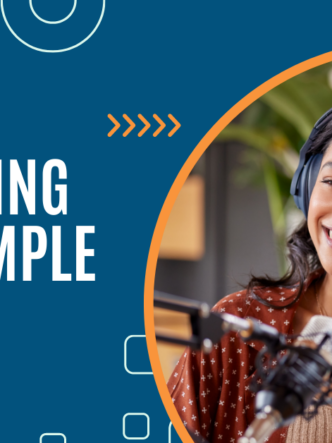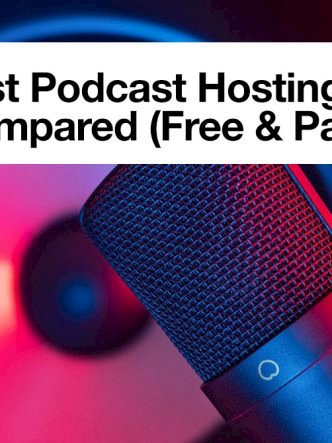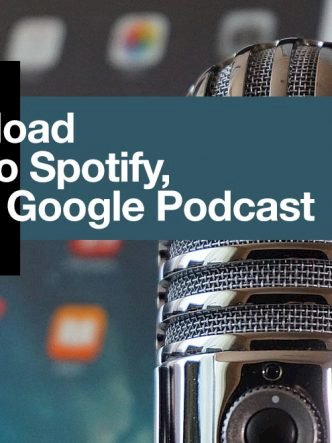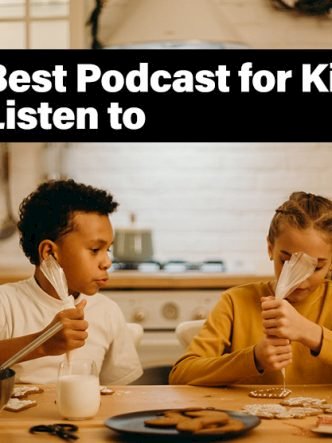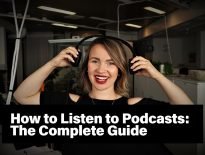
You’ve made your first set of podcasts and you’re ready to put it out in the world. They’re amazing and of super high quality, thanks to the many hours you spent editing it to perfection. However, unless you’ve already made a presence on the internet, expecting thousands or maybe even millions of followers and listeners without any promotion might be a bit too ambitious.
By using a channel as brilliant as social media could help you with that if you know how to derive the maximum from it. Here are seven effective ways you can start a podcast and get it the recognition it deserves, simply by using social media.
Tip #1: Making use of available platforms
Before you start going about promoting your podcast, you must first find what platforms could be best to promote on. If you are investing time, effort, and even money in your promotions, it’s better to only spend your resources where it would provide the most amount of return.

There are many social media platforms in the market that you could use. Still, the list of best ones is dominated by the giants of social media – Instagram, Twitter, Facebook, and YouTube.
Each of these platforms has various formats you could use differently to increase your podcast’s reach through more efficient promotions. Since there is a lot of overlap between different social media platforms, you could use the same content on some of the platforms. However, try to have something unique for each platform that you’re using for social media marketing.
Tip #2: Take time to create your social media profile
Using social media for digital marketing would not help you in any way if your profiles aren’t crafted well enough to be noticed by the algorithm. Their presence as promotion platforms has to lead to the use of keywords and hashtags becoming ever more necessary.
Analyze your podcast’s target population and the categories in which it would lie. If it’s a podcast about motivation and healthy living, look for keywords and hashtags that are most used.
Make an excel sheet and add these keywords and hashtags in a priority sequence. Once you’ve got all you need, use these keywords and hashtags in your bio description in a well-crafted copy. Make these descriptions crisp and concise and minimize the use of unnecessary words.
Tip #3: Create content repurposing plans for each podcast
Having a written-down plan to maximize the use of your podcast can help in getting everything done right and on time. Content repurposing is the process of finding ways to take bits and pieces of one large piece of content (main content) and making modifications to each piece to further use it to promote the main content.

Repurposing your content has no restrictions whatsoever and depends on your creativity and the content itself. Using this method to market podcasts on social media would only increase your podcast’s reach. Let’s take the motivation and healthy living example again.
While repurposing your podcast’s content, you could make a small video snippet that captures a particular segment of the discussion. Another way would be to make graphical quote posts for platforms like Instagram, Facebook, and Twitter.
You could even create a bullet list of “Practices that promote healthy living” or an animation with a voiceover. Another way to repurpose would be to write a dedicated blog post for each of them and generate interest amongst your readers. The options are only bound by your creativity, so let it loose.
Content repurposing requires brainstorming; sit down for 5 minutes and try to think of as many ways you could repurpose your content for the different platforms you use. Don’t think about the quality of the idea and just jot down whatever comes to mind. Once your five minutes are up, go through the list again and start eliminating ideas that:
1) Are not feasible
2) Won’t provide enough value to your audience
3) Would give away too much content from your podcast
Once you have reduced down to a list of repurposing methods, get started on it. Decide where you’d upload the content and ready it accordingly. When you’ve got the content ready, start uploading it systematically.
Tip #4: Use a social media content calendar
Staying active and consistent with the uploads is one of the key ways to keep a steady following and grow it nicely. While you want to stay consistent with your podcast uploads, you also want to stay consistent with your social media promotions. This is where your social media content calendar comes in.

You don’t need a social media manager to manage your accounts when you can do it yourself. Using a social media calendar not only allows you to schedule your posts and organize them according to the sequence of posts, but it also allows you to pre-plan your posts and never stress at the last moment.
Once you’ve created all your repurposed content, add it to your calendar as per the time and day of posting. This can include everything from posts to stories.
Once you’re done setting up for the first set of posts, start working on the next set. Always have one or two sets ready for the future. This way, you’re ahead of your posting schedules and if you ever miss a day of work, you don’t have to burden yourself with the guilt of not producing content because you already have some ready. By using third-party apps like Buffer, you can schedule your posts beforehand and never worry about missing post times and post days.
Tip #5: Consider collaborating with similar content creators
Like you, there are a thousand more podcasters and social media content creators producing content on topics similar to yours. If you’ve kept a close watch on your competition, you’ll know which creators to collaborate with to reach more people. If both of you have a similar audience, your collaboration would only increase your reach.

Think about ways to collaborate with them. You could either do a full-fledged podcast with them or work only on social media. On social media platforms like Facebook, Instagram, and YouTube, you could both go live and pick a topic of discussion from previous podcasts or an upcoming one to generate more interest.
It’s up to you to find more creative ways to collaborate with other artists. While you may have been noticed by someone from their audience, collaborating would give them a sneak peek into your content, thereby attracting them to listen to your full podcast.
Tip #6: Create awesome thumbnails
Getting your thumbnails right is extremely important in a time when most people only judge the book by its cover. Different platforms have different file and image sizes, so you’ll have to optimize your thumbnails for each of them. Not only would you have to optimize your thumbnails for different podcast platforms like Apple Podcast, Google Podcast, and YouTube, but you’ll also have to optimize it for when you upload it on your social media accounts.
For example, if you’re uploading your thumbnail on different platforms like Instagram, Facebook, and YouTube, you’ll need to change the quality and size of the thumbnail for each platform. For Facebook, you will need to reduce the text in your thumbnail if it is too wordy.
If you’re going to add the thumbnail to your stories, you will need to make it vertical, that is, 1080px by 1920px. If you’re uploading as a post, you will need to make it square, that is, 1080px by 1080px. If you’re publishing it on video applications like YouTube, you go with a landscape format, that is, 1920px by 1080px.
Tip #7: Evaluate your social media reach regularly
There’s no way to know if you’ve done a good job with promotions unless you don’t evaluate your podcast promotion. Fortunately, most social media platforms today have their own platforms to evaluate your social media influence. YouTube has YouTube Studio, where you can see the reach of your videos along with new subscribers and many new unique viewers.
Instagram provides you with each post’s insight (after you’ve switched your account to a business account). You get to check unique visitors, shares, and a ton of other such helpful statistics.
You can find such helpful insights in almost all social media applications. If you want more, you could use third-party apps. Make use of these statistics and insights to understand how many people are actually being influenced by your promotions. If you are not meeting your goals, look for ways through which you can improve your promotions.
#Bonus – Social Media Marketing Strategy
Instagram is not only about pictures and 60-second videos anymore. Now, you have the option to choose from Instagram posts, Stories, Reels, and IGTV. Each of these formats could be used in its own way and hence they present a strong case for podcast marketing.
You can use stories to talk directly to your followers and talk about the content of the podcast and reasons why it is worth their time.
You could add snippets of your podcasts as Reels. If your podcasts also have video, you could directly make a small cut of an interesting piece to upload.
If you wish to add a bigger piece of your podcast on Instagram to get people to follow the link to your full podcast, IGTV is the format for you. This will allow you to provide more free value to people, which they can follow back to your podcast, should they grow more interested.
You could use Twitter to link your following back to your podcast. This platform doesn’t provide you with as many platforms, so this strictly becomes a space for the link being driven by well-written, attractive copy.
If you have your podcast content in a written format, you could make use of it to create graphical quote posts or animations. Write creative copy to generate more interest and use Click To Action (CTA) in your posts to get people to interact with your content.
Facebook is quite similar to Instagram, with similar formats available. Owned by the same parent company, these two applications allow you to use the same content. However, you might have to change the quality and size of images while uploading them on both Instagram and Facebook. Maximize your use of graphics and video on Facebook while using both its story and post options.
YouTube
YouTube is where you could upload your entire podcast. This platform is used by many podcasters to monetize their content and make it easier for people to watch their content. While this is a video platform, you need not shoot a video to act as a front for your audio podcast. You could use sketches, animation, graphics, or even stock footage to get your content to more people.
Also, try to use YouTube’s “Shorts” feature, which works just like Instagram and Facebook stories. Making your podcast available on this platform will enable you to increase your podcast viewership as well as earnings.


